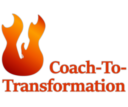

Leading with Vision: Bridging or Bonding?
- Nov 09th 2021
The key elements of leadership are the ability to create a vision, then to lead people towards its fulfilment. Leaders look for new opportunities or different ways to foster growth. Leaders find the new and look to the future, building on but not resting on current success.
Good leaders also look for differences and opportunities, rather than necessarily taking the most obvious or popular route. However, there is no point in being a visionary leader if your followers can’t follow, no matter how enthusiastic they might be. This is where the importance of bridge-building lies, as an essential complement to vision.
Setting out in a new direction requires leaders who can not only lead the way, but also help others follow. They make links between where people are, and where to take them. Not surprisingly though, encouraging people to move from current reality to new ground can cause tension.
This tension can be compared to a rubber band which connects a current situation to a desired outcome. The tension can either be relieved by ‘lowering’ the vision, or by moving the current reality closer to that vision.
It’s the leader’s job to bridge current reality and new vision, defining goals and showing how they are attainable. Senge also advocates that creating a shared vision is much preferable than simply sharing a vision and ‘bridging’ towards it.
Bridging is used by those who lead with vision. Sociologists refer to social capital (the connected-ness which builds a strong society) in two ways: the social capital that bonds and the social capital that bridges. Bonding connections reinforce similarities among individuals, whereas bridging connections span differences. In practice, most societies combine both to one degree and another.
Bridging also refers to looser ties we may have to distant contacts, rather than the stronger, bonding ties we have with closer relationships. Research has shown that where networking is concerned, it’s the bridging rather than the bonding ties which may prove more beneficial.
In his book ‘Bowling Alone’, Robert Putnam quotes Xavier de Souza Briggs who suggests that bonding social capital is good for ‘getting by’, but bridging social capital is crucial for ‘getting ahead’. Bridging generates broader identities and reciprocity, whereas bonding bolsters a narrower perspective.
Putnam imaginatively contrasts the two: In this sense then, leading with vision promotes a sense of common purpose through internal bonding. It also builds external bridges, capitalizing on new opportunities outside of the organization. Both may require our two complementary elements: finding new paths to take and building bridges so that others can follow.
Without one you get nowhere, without the other nobody is with you!
Think about how you might:
- Build bridges for people to follow.
- Choose a path less travelled.
Author Name: Cindy Neboh
Title of the Blog: Leading with vision
About the Author: Cindy Neboh is a HR practitioner who has supported and helped various business leaders to achieve their business goals through talent mapping and strategies. At the top burner for me currently is becoming a professional coach. It is my dream to step in as a coach to help people become the best version of them.
Program Attended with CTT: CTT Level 1
Reason for taking this program: To groom an inborn skill and become a professional and renowned coach
What worked for you: Everything…. The unlearning and relearning process was magical. I miss my class.
What benefits you got:Knowing what coaching really is, the mindset of a coach, knowledge to do my HR work better because anything you add coaching to works!









0